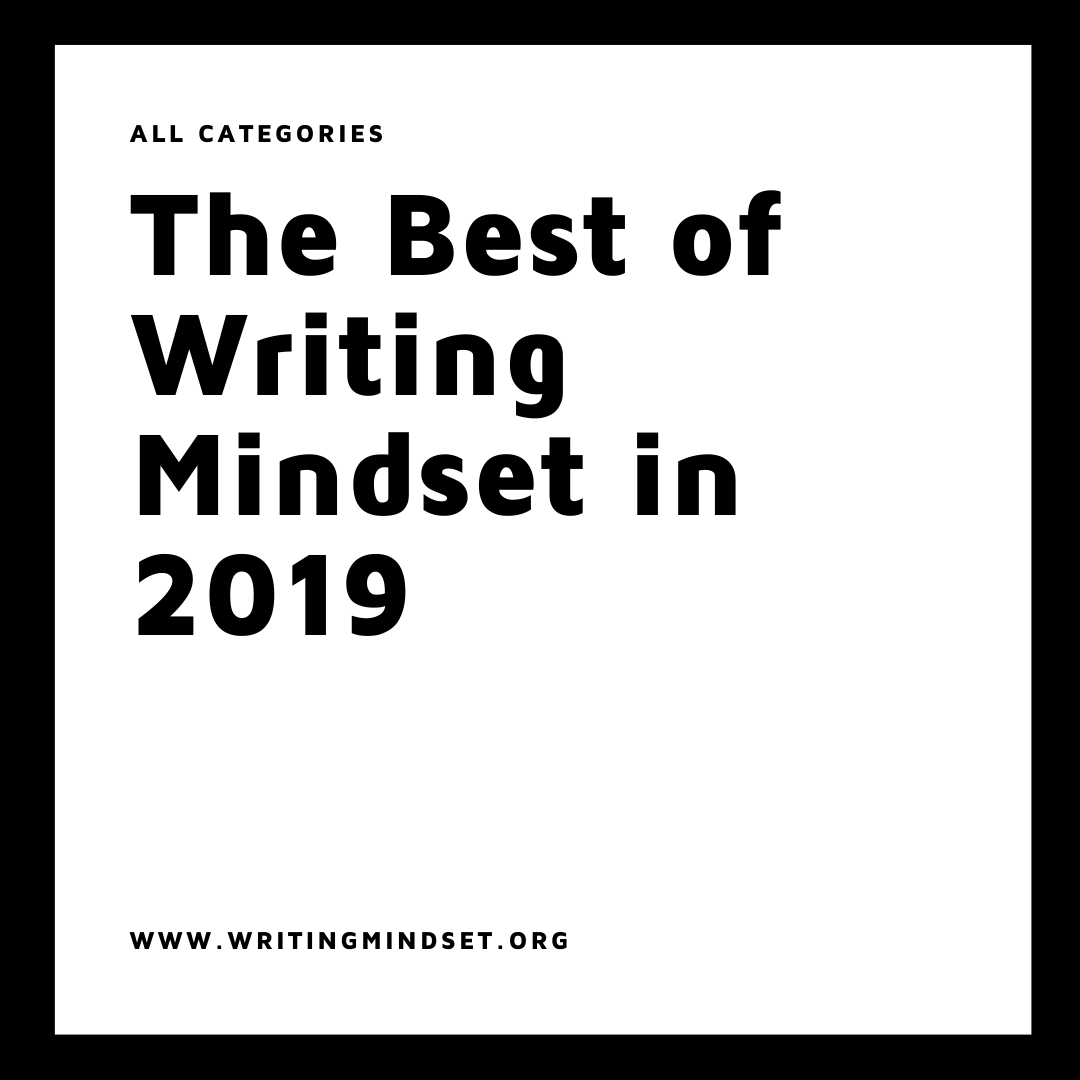The Best of Writing Mindset in 2019
2019: The Year of Growth
What a year this has been! 2019 is coming to a close tomorrow with New Year’s Eve, and I wanted to take a moment to say thank you for sharing this blog space with me throughout the past year. In January 2017, I started Writing Mindset as a way to reflect on teaching. Now, I focus on the ability to not only reflect on teaching, but to also constantly share ideas and learn from others. This blog has been and continues to become a passion project that is an outlet for my learning through teaching. It is also a space that is teaching me so many things. I am always in the role of a student when I am working on Writing Mindset. What I love most about education is trying new ideas and learning new strategies as ways to give and receive information. I am a Questioner, but more so, I am a person who loves to reflect on what went well and the things that did not go so well in my classroom and in life. 2019 was a rollercoaster of reflection. I was awarded the Michigan Council of Teachers of English Middle School Teacher of the Year, I pushed myself outside of my comfort zone by presenting at conferences, and with 48 total blog posts in 2019, I wrote more than any other year so far on the blog. I lend that to being wildly passionate about mentor texts, but I also feel like I am getting closer to why this blog exists in the first place. Writing Mindset is a way to use writing to access mindfulness, mindset, and overall wellness. I can see 2020 becoming a year when I focus more on the whole teacher. This includes the mental, physical, emotional, and intellectual health of anybody in education. Our wellness is an access point to more complex issues in education. As I said in the winter break post recently, our health is their health. Too many of us are unhappy, and too many of us are unhealthy. I can’t wait to explore some of the ways teachers can continue to be happier and healthier in 2020.
Accomplishments
Writing Mindset got closer to design dreams. I had one of my teaching friends (who is also an amazing photographer) take more professional looking pictures of me to post on the blog. I normally do not like getting my picture taken, but I really love how these turned out. The pictures of me on the homepage holding the books are her design. I am grateful for each of our talents here in the teaching community.
There are currently 125 blog posts on the teaching blog. This is up from last year’s 77.
In 2017, I had 800 unique visitors to the blog with 3,489 page views. In 2018, I currently have 2,894 unique visitors to the blog with 4,697 page views. This year, as of the date of this post, the blog has had 11,242 unique visitors and 19,040 page views. This is a growth of around 280%+ in 2019. I love sharing teaching ideas in person, and I am beyond grateful for the ability to share ideas on this little space of the internet.
I put myself out here with presenting at conferences and at district professional developments. I started a PRESENTATIONS page on the blog.
I continue to work on my RESOURCES page and think of better things to share on the blog in terms of professional and mindset resources. In 2020, I am going to post themed calendars for journaling, and I am also going to focus on adding digital download resources to the blog. Right now, I have tons of information on mentor texts, my YouTube playlists, and more. I want to work on the organization of this page, and I want to see more resources regarding teaching mindset, wellness, and overall health.
Goals for 2020
Focus on whole teacher wellness (mental, physical, emotional, intellectual, social, and sensory).
Create digital resources and make them available on the blog.
Present at conferences. Post on the blog. Continue to share the work.
Top Posts
I love looking at these top posts because I like to see what gets the most reading on the blog. Then, I like to compare with what I enjoy writing, what direction I see Writing Mindset going, and what direction I am taking my classroom. Are my practices the same? How am I changing as a teacher over the years? It is interesting that 4 of the 6 top posts were also featured in the best of 2018. I have done some updating since then, but the main ideas and themes of the posts remain the same.
Writing Mindset readers want more information about culturally responsive education and using diverse materials in their classrooms. The post “10 Criteria for Choosing Diverse Texts for Your Classroom” had 18% of my total page views for the entire year. This is by far the most popular post on the blog for many reasons, but it shows me that teachers care about the type of books that are going into their classrooms. Let’s all continue to be obsessed with diverse texts in 2020.
Writing Mindset readers loved talking about narrative writing this year and the power of stories. This one was kind of a surprise! I feel like a lot of the questions I get on the blog and in life are about argumentative or expository writing. People wanted to read about narrative writing this year. Whether it was about focused writing warmups or building an entire unit of narrative work with mentor texts, teachers got excited about stories this past year.
Writing Mindset readers want to see how bullet journaling is done. This post continues to be one of the most popular on the blog because the bullet journal community is so easily transferable to the teaching community and vice versa. We all want to create, plan, and feel less stressed about organization. I will continue to post my “monthly bullet journal plan with me” posts, and I will look into adding some other posts that would help other teachers interested in bullet journaling.










An awesome quick strategy to teach narrative summary writing combines the video elements of Pixar Shorts and the application of Somebody Wanted But So Then. Somebody Wanted But So Then is a widely taught strategy for teaching summary while reading fiction. While the materials for SWBST are vast, I often find the easiest way to teach this memorable technique is through the use of quick shorts or Pixar shorts that are available on YouTube. I use the gradual release of responsibility model that focuses no I Do, We Do, You Do. This technique is best applied as a scaffolding technique to reach a higher-level goal. This post will outline the strategy for teaching summary writing with fiction texts, and it will also link some of my favorite Pixar shorts or clips to use in my middle-grade classroom.